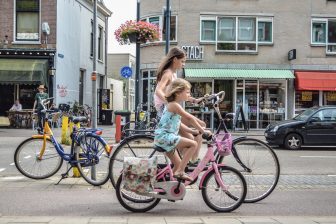
Could Europe get a total 30km/h speed limit in urban areas?
A blanket 30km/h speed limit is one of the major recommendations of a European Commission working group for improving road safety in urban areas.
In a move that reflects both of the EU Urban Mobility and Road Safety Policy frameworks, this latest policy development could ultimately be a major help in preventing the number of children killed or injured on the roads.
Young people and other vulnerable road users would seem to be the obvious beneficiaries from the Expert Group for Urban Mobility’s latest recommendations, which call on the commission to establish high-quality standards for pedestrian and cycling infrastructure.
It has also been published around the same time as the European Commission prepares to release a midterm review of its 2021-2030 road safety strategy, which was set out in 2021. That reaffirmed the European Union’s long term ‘Vision Zero’ strategy, its goal of achieving as close to zero deaths and zero injuries as possible on the roads by 2050.
Describing the implementation of a 30km/h speed limit as a ‘very constructive first step’, the report says: “Many cities and regions that have implemented 30km/h speed limits have observed measurable decreases in collisions between motor vehicles and in collisions with people walking and cycling, as well as a reduction in the severity of consequences. Slower motor vehicle speeds also decrease noise and air pollution and increase the feeling among people who want to walk, cycle or take public transport.”
‘Very constructive first step’
Excessive speed continues to be ‘a prominent factor’ in collisions involving vulnerable road users, with The Netherlands, for example, reporting that some 70 per cent of car drivers exceed the speed limit in 30km/h zones.
Reflecting the technological advancements made in vehicle technology in recent years, the group also wants the EC to ensure that assisted and automated driving systems operate safely around non-motorised traffic participants.
The minimum standards for Intelligent Speed Assistance technology, required on all new vehicles sold in the EU from July this year, should be strengthened to actually limit speed, rather than just operating as a speed alert function.
Also included in the recommendations are additional rules on vehicle design, namely limiting weight and power, in order to reduce deaths and serious injuries effectively.
The Commission is also urged to work more closely with national governments to record and collect data, broken down by modal transport share and road types, to better understand risk ratios and be more aware of who is involved in road collisions.
The report points to figures from the United Kingdom’s Department of Transport who, in surveys of parents, found that some 40 per cent said their children were driven to school, while 56 per cent said they usually walked. However, the most recent survey suggested only 46 per cent of children walked to school regularly in 2013.
Parents’ biggest fears outside schools included speeding traffic (30 per cent) and unsafe parking by other adults (17 per cent). Only seven per cent of children walked to school alone, with parents citing speeding and heavy traffic on busy roads.
Click here for the report.




